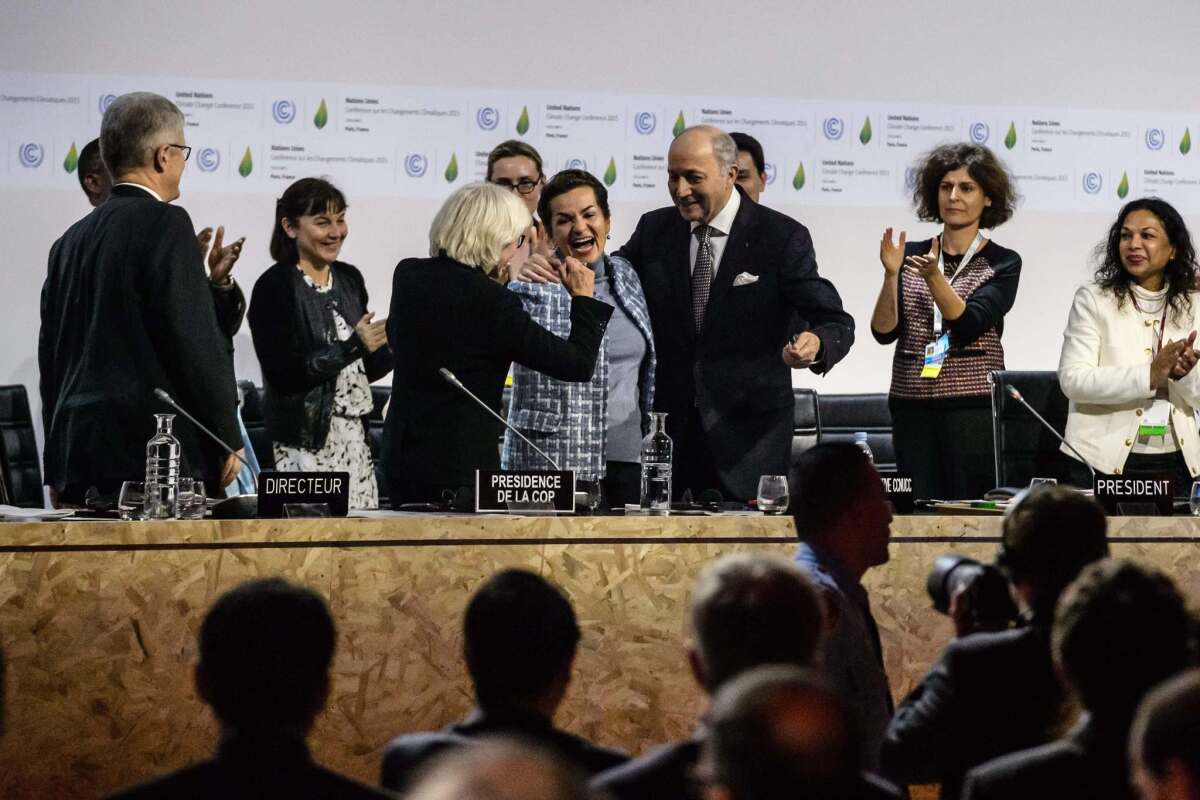Here’s what the Paris world climate agreement will do — and what it won’t

As President Trump was weighing his decision to pull the United States out of a historic climate agreement, there was much debate between opponents and supporters about the implications for Americans.
Opponents argued that staying in the deal that was reached outside Paris in 2015 was bad for the U.S. economy, and some suggested that it could affect the administration’s ability to roll back domestic climate programs with which it did not agree. Those arguments were strongly refuted by the pact’s supporters, who said that the cost to the U.S. of staying in the accord would have been minimal.
Here is a refresher about what the Paris agreement will and won’t do.
What is the main goal of the deal?
The stated goal among global climate negotiators has long been to reduce emissions enough so that global temperatures rise no more than 2 degrees Celsius, or 3.6 degrees Fahrenheit, by 2100. That is the level at which scientists say the most catastrophic effects of climate change can be avoided.
That goal was not met at Paris, but few people expected it to be. The agreement includes provisions for revisiting emissions goals every five years with the intention of regularly revising them upward “to reach global peaking of greenhouse gas emissions as soon as possible.” The five-year time frame was pushed heavily by the United States.
What about this new 1.5-degree goal?
The agreement also defines a more ambitious goal: limiting warming to 1.5 degrees Celsius. As the conference unfolded, a group of developing nations, including representatives from poor countries and some island nations threatened by rising seas, successfully pressed to include 1.5 degrees as an “aspirational” goal. That threshold, experts say, could further reduce risks from global warming, potentially preventing the melting of ice sheets in Greenland and Antarctica, but it would require more extensive emissions reductions and, potentially, new technology for capturing carbon. The agreement invites the Intergovernmental Panel on Climate Change, which operates under U.N. auspices, to provide a special report in 2018 on the impacts of such a goal.
Who sets each nation’s goals?
The nations themselves. Each country committed to phasing out the use of fossil fuels while increasing renewable energy. Each sets its own emissions targets and comes up with plans for meeting them.
The agreement does not include rigid timelines by which the goals must be met, nor does it make the goals binding under international law. Then-U.S. Secretary of State John F. Kerry made clear in the days before the conference that the United States would not commit to binding targets, in part because legally binding targets would require approval by the Republican-controlled Senate, which had not been supportive of the Obama administration’s climate goals.
Then how will countries be held accountable?
While emissions targets themselves are not binding, nations will be required to submit to outside monitoring of their progress — an idea negotiators referred to as transparency. The United States successfully argued for a single framework, but developing countries like China and India ensured they will not need to meet the same requirements.
Article 13 states: “In order to build mutual trust and confidence and to promote effective implementation, an enhanced transparency framework for action and support, with built-in flexibility which takes into account parties’ different capacities and builds upon collective experience, is hereby established.”
Who will pay to develop the renewable energy that must replace fossil fuels — and to help countries deal with the effects of climate change?
Another tender topic. Poor and developing countries wanted wealthier nations to pay to help develop new, clean energy sources that would not prevent them from growing economically. In the end, that is basically what happened, but some developing nations were frustrated that the agreement does not include a legal commitment to an annual amount — specifically, $100 billion per year, a figure that has long been suggested. However, developed countries have pledged to provide no less than that figure and ramp up their contributions in the future, a provision that India wanted.
Article 4.4 of the agreement states: “Developed country parties should continue taking the lead by undertaking economy-wide absolute emission reduction targets. Developing country parties should continue enhancing their mitigation efforts, and are encouraged to move over time towards economy-wide emission reduction or limitation targets in the light of different national circumstances.”
The agreement commits all nations to cooperating to address a wide range of ways in which poor and developing nations deal with climate-change effects — whether from extreme storms or “slow onset events” like rising seas — an idea called “loss and damage.”
The agreement states that countries signing on “recognize the importance” of minimizing and addressing damage caused by climate change and the role of “sustainable development” in reducing the risk of loss and damage.
Twitter: @yardleyLAT
Times staff writers Chris Megerian in Le Bourget, France, and Alexandra Zavis in Paris contributed to this report.
MORE ON THE CLIMATE AGREEMENT
Climate change deal updates: Accord is the best chance to save the planet, Obama says
Jerry Brown in Paris: California governor goes deep on climate change and other global threats
UPDATES:
12:35 p.m.: This article was updated with President Trump’s decision to withdraw from the Paris climate accord.
This article was originally published on Dec. 12, 2015.
More to Read
Sign up for Essential California
The most important California stories and recommendations in your inbox every morning.
You may occasionally receive promotional content from the Los Angeles Times.











